Myanmar, India and China relationships are dictated by their respective geographies. Myanmar is India’s gate way to ASEAN and pivot to its look east and act east policies. Whereas for China, Myanmar is one of the important countries through which it is trying to gain access to the seas for its ever-expanding economy. 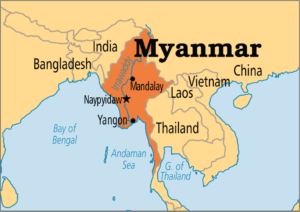 Therefore, any major event in Myanmar, internal or external, are perforce viewed for its overall impact on the strategic environment of South Asia, where India-China stakes are high.
Therefore, any major event in Myanmar, internal or external, are perforce viewed for its overall impact on the strategic environment of South Asia, where India-China stakes are high.
During ancient days, both China and India shared rather uneventful relation with erstwhile Burma. Burmese traders historically, used land route to reach the nearest Chinese province of Yunnan. Despite trade volume being very low, it proved enough to attract British interest in this exotic land. On the other hand, India as an immediate neighbor with 1,640-km land and maritime borders, had developed a deep socio-religious bond with Burmese people over a period of time. Though the rulers of ancient India, had no history of political engagement with Burma, the peaceful co-existence was briefly, disturbed by the British imperialists in India. They waged three bloody wars on the Burmese kingdom in 1825, 1852 and 1885. Ultimately in 1885 the last Burmese king Thibaw was defeated by the British army and Burma was merged with the existing British colony in India. Till 1936, Burma was ruled from Delhi as one of its provinces by the British government and it was only in 1937, Burma was made a separate crown colony of Britain.  Towards the end of WW-II in 1942, Burma came under a brief occupation of imperial Japan which was soon recovered by the allied forces in 1945. In 1948, after the war was over, Myanmar acquired its independence through a British Act of Parliament, with Myint as president and U Nu as the prime minister.
Towards the end of WW-II in 1942, Burma came under a brief occupation of imperial Japan which was soon recovered by the allied forces in 1945. In 1948, after the war was over, Myanmar acquired its independence through a British Act of Parliament, with Myint as president and U Nu as the prime minister.
The civilian government of U Nu proved ineffective in stabilizing the fledgling nation from its internal conflicts. Tribal strife became rampant, often leading to bloody violence.
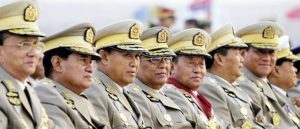
This prompted the Myanmar army to stage a coup d’état in 1962. This coup made the military junta virtual rulers of Myanmar under the banner of Burma Socialist Program Party for the next five decades.
During this phase of Myanmar’s independent history, Indo-Myanmar relations remained on a very neutral and cordial ground. Just like India, Myanmar had shrugged off its colonial past and immersed itself in the task of picking up the scattered pieces of its nation-hood and laying the foundations of a new modern society with its own national identity rooted in its own history and tradition. Myanmar went through this process, not under a democratically elected government, but under a military junta, called the “Tatmadaw”. Tatmadaw’s lack of democratic credentials and suppression of democratic aspirations of its own people, earned it a global reprisal that subjected it to an unprecedented long periods of US sponsored economic sanctions. During this period, India assiduously followed a policy of non-interference in Myanmar’s internal affairs and despite global boycott, remained committed to assist Myanmar in its nation building effort with its own limited resources.
Decades of crippling western sanctions eased when Tatmadaw demonstrated through 2008 constitution, its willingness to share power with democratic forces within the country. The new constitution enabled democratically elected govts to share power with army. After couple of boycotts of elections in 2010 &12, held under the new constitution, the popular leader Noble laureate Aung Saan Suu Kyi’s party National League for Democracy (NLD) finally formed a civilian govt under her State Councilor ship, in 2015 after she was released by the military junta from several decades of house arrest.
Despite earning criticism from global human rights groups for her less than glorious handling of the Rohingya crisis that dented her international reputation considerably, Suu Kyi’s popularity at home remained formidable. As a result, she was sent back to power with overwhelming majority in the November 2020 elections last year. This was the moment when Tatmadaw started feeling uncomfortable.
Intimidated by Suu Kyi rising popularity among the powerful Bamar-Buddhist majority, coupled with her proclivity to seek constitutional amendments intended to reduce “senior general’s (SG)”powers emanating from their 25% reserved seats in parliament, General Min Aung Hlaing, the current head of army, who is about to retire, decided to pull the plug once again on the elected government terming the last election manipulated and fraud.
Going back once again in past, it is important to note that during the crippling era of prolonged global sanctions, military rulers of Myanmar, in addition to India, had leaned heavily on China too for their survival, support and supplies. This led Chinese leaders to develop close ties with the Myanmar establishment. However, it is equally important to note that Tatmadaw, unlike its counterpart in Pakistan, has a very strong sense of national pride and very sensitive about its own independence. As a result, till now it had not given CCP the kind of rope to rule over them as Pakistan army has done. One of the reason advanced for General Hlaing coup, is his unhappiness over the proximities Aung Sang Suu Kyi was developing with her Chinese counterparts bypassing the army. However, this is just a speculation and the true story about the exact reasons for this coup will be known to the posterity much later.
Therefore the question is – where will this story go from here ? For India, the factor that strategically overrides all other consideration is the challenge posed by Chinese expansionism. Like that of the tentacles of a giant octopus, the Chinese BRI’s long arms are fast inching toward Indian ocean region from multiple directions. If the Chinese investments in Chahbahar in Iran, Gwadar and CPEC in Pakistan, Leh-Kathmandu railway line in Nepal, infrastructure involvement in Bangladesh, CMEC and Khyaukpyu port in Myanmar and leasing of Hambantota port in Srilanka are all clubbed together and plotted on the south Asian map, it will be clear that china is making an unprecedented long term strategic push towards the Indian Ocean to step up its economic and strategic foot print in the region. 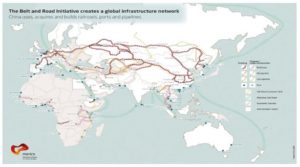 It needs no extraordinary strategic acumen to understand that every inch of increase in Chinese influence in South Asia is de-facto at the cost of India as a regional power and would reduce Indian influence in its own region by the same proportion.
It needs no extraordinary strategic acumen to understand that every inch of increase in Chinese influence in South Asia is de-facto at the cost of India as a regional power and would reduce Indian influence in its own region by the same proportion.
By signing an MOU with China in 2018, Suu Kyi govt had already signaled Myanmar’s embracement of the Chinese Belt and Road to be called in Myanmar as the “China Myanmar Economic Corridor (CMEC)”. The MoU prepared the ground for a massive Chinese infrastructure investment in Myanmar to the tune of USD 15-20 Billion which includes development of a deep seaport of Kyaukpyu in Bay of Bengal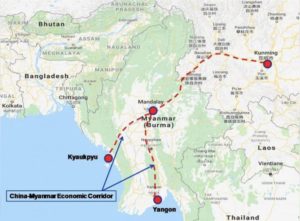 and connecting this sea port with Kunmin in Yunnan with high speed railways, expressways, power-grids, energy-pipelines and SEZs along with host of high capital investments in power plants, dams, bridges etc. Most of the above proposals are still on the drawing board with many daunting local problems holding them back. Amusingly, as per the Chinese model, these high capital infrastructure investments, are to be done at the cost of Myanmar, ignoring the fact that bulk of its benefit are likely to go towards serving Chinese strategic interests and promotion of Chinese products in Myanmar at the cost of Myanmar’s own domestic economy. Considering above, there is a large constituency in Myanmar establishment that, in view of their bitter colonial past, wish to proceed with caution to avoid recurrence of the rise of neo-colonialism in their country.
and connecting this sea port with Kunmin in Yunnan with high speed railways, expressways, power-grids, energy-pipelines and SEZs along with host of high capital investments in power plants, dams, bridges etc. Most of the above proposals are still on the drawing board with many daunting local problems holding them back. Amusingly, as per the Chinese model, these high capital infrastructure investments, are to be done at the cost of Myanmar, ignoring the fact that bulk of its benefit are likely to go towards serving Chinese strategic interests and promotion of Chinese products in Myanmar at the cost of Myanmar’s own domestic economy. Considering above, there is a large constituency in Myanmar establishment that, in view of their bitter colonial past, wish to proceed with caution to avoid recurrence of the rise of neo-colonialism in their country.
In contrast, India’s total direct assistance portfolio in Myanmar does not exceed over US $1.75 billion. However, it is noteworthy that bulk of above Indian investment in Myanmar are in the form of grants. They are mostly related to such micro development projects that Myanmar needs to tackle its immediate local problems. Notwithstanding, India too has its own version of major connectivity projects in progress in Myanmar. 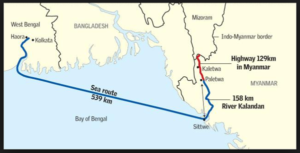 First is The Kaladan project that connects Myanmar’s Sittwe Sea Port to Mizoram in India and beyond. Project was initiated jointly by India and Myanmar to create a multi-modal platform for cargo shipments from Kolkota to reach the north eastern parts of India through Myanmar reducing transportation distances and their need to go through the longer Siliguri corridor. The second project is India–Myanmar–Thailand Trilateral Highway . It is a highway under construction to connect India’s border trade city of Moreh (Manipur) to the Thai trade hub of Mae Sot via Myanmar.
First is The Kaladan project that connects Myanmar’s Sittwe Sea Port to Mizoram in India and beyond. Project was initiated jointly by India and Myanmar to create a multi-modal platform for cargo shipments from Kolkota to reach the north eastern parts of India through Myanmar reducing transportation distances and their need to go through the longer Siliguri corridor. The second project is India–Myanmar–Thailand Trilateral Highway . It is a highway under construction to connect India’s border trade city of Moreh (Manipur) to the Thai trade hub of Mae Sot via Myanmar.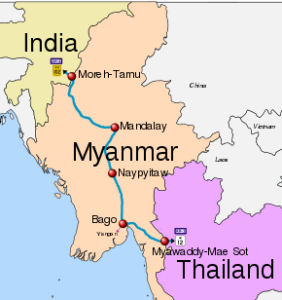 Bulk of this highway is already existing in good condition in Myanmar, however the missing link of roughly 120 km Kalewa-Yaqvi stretch is being upgraded by India. India has proposed extending the highway to Cambodia, Laos and Vietnam to create an East-West-Economic-Corridor. Highway connecting Thailand to Cambodia and Vietnam already exist since 2015. These practical connectivity projects, when completed, are likely to generate an incremental GDP of an estimated US$70 billion and incremental aggregate employment annually to the tune of 20 million in the region by 2025. India has offered US$1 billion line-of-credit for execution of these projects. In December 2020, Bangladesh also expressed official interest in joining this connectivity project to boost its economy. Therefore, if the above home grown, multinational connectivity projects, catering to local needs, fructify in time, it is likely to give the desired push to the economic integration and overall development of this area in a very congenial atmosphere with none of the dagger of debt traps hanging over head.
Bulk of this highway is already existing in good condition in Myanmar, however the missing link of roughly 120 km Kalewa-Yaqvi stretch is being upgraded by India. India has proposed extending the highway to Cambodia, Laos and Vietnam to create an East-West-Economic-Corridor. Highway connecting Thailand to Cambodia and Vietnam already exist since 2015. These practical connectivity projects, when completed, are likely to generate an incremental GDP of an estimated US$70 billion and incremental aggregate employment annually to the tune of 20 million in the region by 2025. India has offered US$1 billion line-of-credit for execution of these projects. In December 2020, Bangladesh also expressed official interest in joining this connectivity project to boost its economy. Therefore, if the above home grown, multinational connectivity projects, catering to local needs, fructify in time, it is likely to give the desired push to the economic integration and overall development of this area in a very congenial atmosphere with none of the dagger of debt traps hanging over head.
However, in the recent months, the situation around India has taken an adverse turn. Against the backdrop of aggressive posturing at borders, China has further consolidated its strategic ties with Pakistan, signed more strategic MoUs with Nepal & Myanmar during Mr. Xi’s recent visits and re-enforced its Sino-Srilankan ties by obtaining new mega contracts and fresh bouts of massive investments in Srilankan port city. These developments suggest that the time is running out for India. Indian diplomacy must admit that an unprecedented challenge is knocking at its door that can no longer be ignored. This challenge must be taken headlong with vigor, substance and ingenuity.
Considering the circumstances highlighted above, the broad policy parameters under which the Indian strategy should move are –
Diplomacy and Democracy – As one of the leading democracies of the world, India is naturally expected to uphold democratic values world over.

However, principles of non-interference in neighbor’s domestic affairs are equally sacrosanct for India. Therefore, it may be advisable for India to maintain neutrality and resist any temptation to play a direct role in Myanmar domestic issues. US, has once again been prompt, under President Biden to declare an array of sanctions against the military rulers of Myanmar. England and France have followed suit. Notwithstanding, India must use its diplomatic clout in US to persuade that these sanctions do not increases the hardship of average common people in Myanmar. India must take a lead in fulfilling the humanitarian needs of the common people affected by these sanctions by keeping the channels of medical, food and essential supplies open. Traditionally India had maintained good relations with both Military and Democratic forces in Myanmar. Therefore, it must offer the services of it good offices to mediate only when both the parties want it and are positive about it.
Military to Military Cooperation – Indian military ties with Tatmadaw had always been very cordial and strong specially after Indo Myanmar friendship treaty 1993. Recent support to each other in dealing with insurgency problems has added this mutual trust further. This is one investment India must bank on and build upon. At the same time the coercive nature of Chinese engagement designed to weaken its client states by creation of crippling “supply chain dependencies” and “debt traps”, must be a constantly reminded to the Tatmadaw invoking their deep sense of independence and national pride. Myanmar army unlike Pakistan, does not trust PLA as much. India must capitalize on this factor as much as possible.
Infrastructure and Connectivity – South Asia always needed a strong, efficient, and effective regional connectivity to keep the neighbors bound together. Deficiencies in this connectivity infrastructure is now being filled up by China. 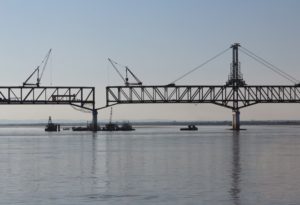 To wrest the initiative from China and ring-fence areas of strategic concern from future Chinese investments, India must offer its neighbours an alternative robust plan that is more attractive and suited to their actual local needs than the Chines model of mega projects laden with incumbrances. Gen Naravane said in his recent talk given to Assam Rifles and USI in February, 2021 that delay and deficiencies have plagued our Kaladan Multimodal Transport Project and the Trilateral Highway projects. This must be avoided at all cost. Expediting existing projects and offering new joint inter-regional infrastructure projects financed by international financing agencies on easier and more transparent terms and executed within local expertise involving local skill, technology, men & material that benefits the host nations, needs to be worked out to counter the charm of predatory Chinese BRI projects.
To wrest the initiative from China and ring-fence areas of strategic concern from future Chinese investments, India must offer its neighbours an alternative robust plan that is more attractive and suited to their actual local needs than the Chines model of mega projects laden with incumbrances. Gen Naravane said in his recent talk given to Assam Rifles and USI in February, 2021 that delay and deficiencies have plagued our Kaladan Multimodal Transport Project and the Trilateral Highway projects. This must be avoided at all cost. Expediting existing projects and offering new joint inter-regional infrastructure projects financed by international financing agencies on easier and more transparent terms and executed within local expertise involving local skill, technology, men & material that benefits the host nations, needs to be worked out to counter the charm of predatory Chinese BRI projects.
Use of Soft Power – It is said that Indo Myanmar relation is built on the foundations of five “B”. Buddhism, Business, Bollywood, Bharatnatyam and Burma teak — these Bs constitute India-Myanmar relations in popular imagination.
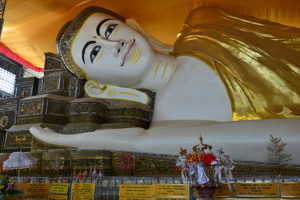
In competitive diplomacy in Myanmar India must leverage this factor . Therefore, people to people socio, cultural and academic engagements with Myanmar must be intensified in an institutional manner. At the same time, an Indian connectivity strategy should refrain from excessive emphasis on “cultural unity” or “alikeness” in the region. In the cautionary observation of I. P. Khosla, a senior Indian diplomat who served across South Asia said, “India’s neighbours find it difficult to endorse proposals that could in any sense hint at the recreation of past unity.”
Trade and Commerce – Trade and commerce rests at the core of sustainable international relationship. At present bilateral trade between Myanmar and India is hovering at the level of USD 2 billion per annum while with China it has already crossed the USD 17 billion Even Thailand and Vietnamese businesses have actively seized business opportunities in Myanmar and stand much ahead of India as Myanmar’s prominent trading partners. This needs to be addressed and corrected. Myanmar is an energy-rich and resource-rich country. It is also touted as the land of opportunities. Indian businesses must step up their investments in the power, steel, automobiles and even textile and farming sectors in Myanmar. A host of Indian companies have already pitched their tent in Myanmar. These include, among others, the state-owned ONGC Videsh Limited (OVL), Jubilant Oil and Gas, Century Ply, Tata Motors, Essar Energy, RITES, Escorts, Ranbaxy, Cadila Healthcare Ltd, Dr. Reddy’s Lab., CIPLA, and Apollo.
Two areas deserve special focus where Myanmar is getting benefitted by India’s experience and expertise. One is cooperation in the field of energy. India’s state-owned and private companies have already acquired gas blocs and seven Indian companies are among 59 shortlisted by the Myanmar government for submission of final bids for 18 onshore gas blocks on offer. OVL and GAIL have already announced $1.33 billion investment in China-Myanmar gas pipeline project. Such projects need to be progressed with full government and institutional support as priority national projects.
Second important area is agriculture as Myanmar is home to sprawling stretches of virgin forests and fertile land. It is virtually a food granary of the region. Not surprisingly, India imports from Myanmar beans, pulses and forest-based products. With its mastery in agricultural technologies, India must contribute in revolutionizing the agricultural sector in Myanmar in a manner that it benefits both the countries. In this regard, an Advanced Centre for Agriculture Research and Education in Yezin and a Rice Bio-park in the integrated Demonstration Park in Nay Pyi Taw pledged by India in 2012 has already been inaugurated recently during the visit of Indian President Sri Ram Nath Kovind in December 2020.
BIMSTEC and Mekong Ganga Cooperation (MGC): Myanmar became a member of Bay of Bengal Initiative for Multi-Sectoral Technical and economic Cooperation (BIMSTEC) in December 1997 and is a signatory to the BIMSTEC Free Trade Agreement. It is the lead country for the energy sector of this group. Myanmar trades mostly with Thailand and India in the BIMSTEC region. Major exports to India under this FTA by Myanmar are beans, pulses and maize and forest products such as teak and hardwoods. It imports from India chemical products, pharmaceuticals, electrical appliances, and transport equipment. The 13th BIMSTEC Ministerial Meeting was held in Myanmar in January 2011. Myanmar is also a member of the Mekong Ganga Cooperation (MGC) since its inception in November 2000. MGC is an initiative by six countries – India and five ASEAN countries namely, Cambodia, Laos, Myanmar, Thailand, and Vietnam – for cooperation in the fields of tourism, education, culture, transport, and communication. The chairmanship of MGC is assumed by member countries in alphabetical order. India must accord top priority to these important engines of its look east and act east policies with vigor and urgency instead of treating them merely symbolic routine matters like the defunct and ineffective SAARC.
Rohingyas – The stickiest issue Indian diplomacy has to tackle in its relation with Myanmar is Perhaps not democracy but that of Rohingyas. 90% of 55.22 million strong predominant Buddhist population of Myanmar has only 2% (i.e.1 million) Muslim Rohingyas. 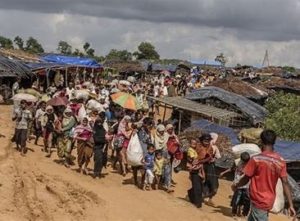 They are extremely impoverished lot, living in the coastal areas of Rakhine (Arakan) province. Buddhist majority consider them as Bangladeshi migrants who settled in Myanmar illegally during British era. Hence this minority faced institutional discrimination and prosecution in past. It has also been disfranchised by successive census reports of Myanmar. In 2017 the matter took a serious turn when a massive crackdown was unleashed by Myanmar’s army in retaliation to Rohingya militant’s killing of few security personnel. This crackdown by army, in which many human rights violations were alleged,
They are extremely impoverished lot, living in the coastal areas of Rakhine (Arakan) province. Buddhist majority consider them as Bangladeshi migrants who settled in Myanmar illegally during British era. Hence this minority faced institutional discrimination and prosecution in past. It has also been disfranchised by successive census reports of Myanmar. In 2017 the matter took a serious turn when a massive crackdown was unleashed by Myanmar’s army in retaliation to Rohingya militant’s killing of few security personnel. This crackdown by army, in which many human rights violations were alleged,  caused massive exodus of approximately 90,000 Rohingyas from Myanmar to Bangladesh. India’s soft, backfoot approach was seen in Bangladesh hosting nearly a million refugees, with disappointment. Bangladeshi journalist Humayun Kabir Bhuiyan argues that “Indian policy regarding the Rohingya crisis has always favored Myanmar.” India supports Myanmar for peaceful development of Rakhine state which is the home for bulk of the Rohingyas. Prime Minister Narendra Modi had also expressed support for Myanmar’s peace process between Government and Ethnic Armed Groups.
caused massive exodus of approximately 90,000 Rohingyas from Myanmar to Bangladesh. India’s soft, backfoot approach was seen in Bangladesh hosting nearly a million refugees, with disappointment. Bangladeshi journalist Humayun Kabir Bhuiyan argues that “Indian policy regarding the Rohingya crisis has always favored Myanmar.” India supports Myanmar for peaceful development of Rakhine state which is the home for bulk of the Rohingyas. Prime Minister Narendra Modi had also expressed support for Myanmar’s peace process between Government and Ethnic Armed Groups.
Therefore, as far as issues related to Rohingya and democracy are concerned, India has to balance and walk in Myanmar on a very tight moral rope. China’s long-term outlook to treat Myanmar and Pakistan as “land bridges” to access Indian Ocean shall continue to drive Beijing’s policies in the region. Therefore, the core factors defining the Sino-Myanmar-India relationship is not likely to change soon. India has to keep its guard up and watch out that Chinese involvement in this region remains strictly limited to trade and commerce and strategic in nature.









Thought provoking article. Ambitious China and her attitude to bring awkwardness in relations, and situations needs to be closely monitored. MEA will have its hands full and minds and brain work overtime.
great publish, very informative. I’m wondering why the opposite specialists of tuis sector don’t notice this.
You should conntinue your writing. I am sure, you have a geat readers’ base already! https://Www.Waste-NDC.Pro/community/profile/tressa79906983/